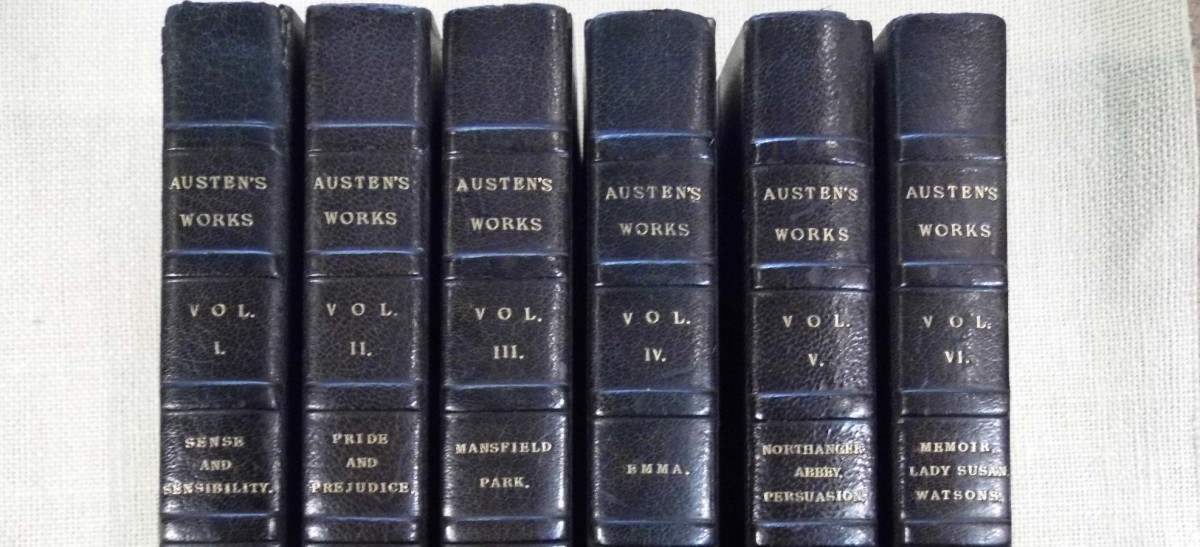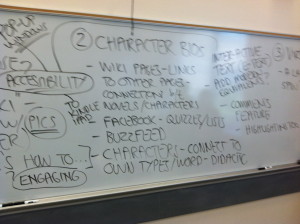A little over a year ago, as I was planning the syllabus for my Jane Austen course for the Spring 2015 semester, I got stuck. I wanted to bring students an idea for an ongoing digital humanities project centered on Austen’s novels so we could start working on it. The previous semester that model worked out pretty well for my graduate seminar on eighteenth-century poetry as my vision to create a digital miscellany of “interesting” eighteenth-century poems actually became a thing–Poetical Scavenger–by the end of the semester. But that “we-gotta-do-this” idea just wasn’t happening this go round.
Part of the problem was Austen, or rather what Austen and her novels have become in both academic and popular culture in the twenty-first century. In addition to the movies, the fan fiction, the t-shirts, and the toothpaste (not kidding on that last one; in fact, I saved 8 bucks by resisting the urge try it) the internet abounds in digital Austen projects which, frankly, is a bit overwhelming when one is trying to find a niche or, dare I say, conceive of something “original” to do. Nevertheless, I soldiered on, sizing up the Austen internet footprint as best I could until, quite simply, I ran out of time. The semester was about to start, and I still had no clue what we were going to do.
Deadline pressure is a powerful thing (for students and their professors) and in this instance it forced me into radical rethinking mode: what if my lack of an idea was, in fact, an idea. That is, I decided to make the problem I was having coming up with a DH project idea for this course the issue I would get students to research and think through. Our goal would be to come up with an interesting, doable, long-term project by semester’s end. I had failed, but I recalled failure is valued in the DH world, as is communal, collective endeavor. This was going to work!
And so it did. The students began thinking about this issue early in the semester, and worked in earnest on it in small groups at various times throughout, leading up to the last class which we devoted to brainstorming project ideas based on the criteria I had set out. During that last 75-minute period I could barely keep up as I tried to capture their collective thinking on the white boards.
My recollection is that we defined and detailed 3 or 4 project ideas, discussed the potential value of each in both pedagogical and practical terms, and considered the “doability” factor of each with regard to available digital platforms and our, ahem, obvious lack of resources.
The “Annotations” idea easily won out. Students felt that, although the editions of Austen’s novels that I order for the course include scholarly annotations, there was potential to do much more in that area. Their idea, in effect, was to create electronic editions of Austen’s novels annotated by undergraduates for undergraduates. We also noted that the digital world must offer a way to enhance the typical text-only glosses one finds in the footnotes of a print edition. Adding visual material to such annotations where applicable–especially in the form of contemporary engravings, illustrations, and/or paintings–was keenly desired. Of course, I quite liked the pedagogical implications: this project would actively engage students in doing the research necessary to compile such annotations. The project would also add another close-reading layer as students had to determine what words, phrases, or passages required annotation; they would learn about proper sources to use in seeking out relevant information for writing annotations; they would improve their digital literacy skills in vetting on-line sources and locating relevant images; and they would be creating an end-product with at least potential practical value beyond the classroom.
So here we are in Spring 2016 about to embark on the project. Having a focus idea certainly helped speed things along; last Fall my colleague, Prof. Larry Hanley, introduced me to a web annotation tool called Hypothes.is which offers the basic capabilities students defined in our end-o’-the-semester discussion last Spring. A version of this annotation tool can be downloaded as a plug-in for self-hosted WordPress sites. Now I was in familiar territory. The first iteration of “Annotating Austen” was easy to build, but I expect this cohort of ENG 581 students will find ways to expand and improve the site as we begin work on Northanger Abbey this semester.


